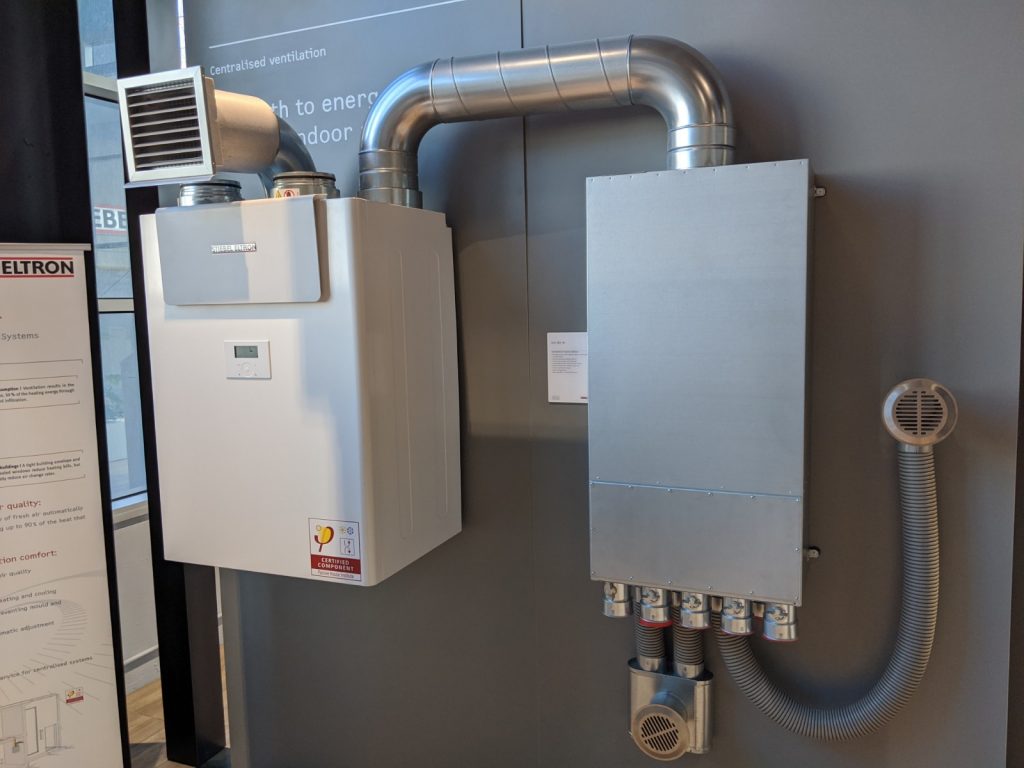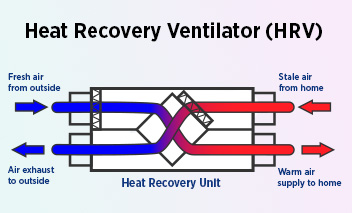Common Questions About HRV Explained
Wiki Article
Checking out the Perks of Heat Recovery Ventilation for Energy Performance in Homes
Heat Recovery Ventilation (HRV) systems provide homeowners a practical approach to improving energy performance. By redeeming heat from outbound air, these systems can substantially decrease home heating and air conditioning expenses. Additionally, they supply a consistent supply of fresh air, enhancing interior air top quality and convenience levels. As homeowners consider lasting options, recognizing the subtleties of HRV systems ends up being increasingly crucial. What factors should one evaluate prior to making such a financial investment?Recognizing Heat Recovery Ventilation Solutions

How HRV Boosts Indoor Air Top Quality

Energy Cost Savings: The Monetary Benefits of HRV
Making the most of power effectiveness, heat recovery ventilation (HRV) systems offer substantial financial benefits for home owners. By recuperating and recycling heat from exhaust air, HRVs substantially reduce home heating and cooling prices. This technology can result in energy savings of approximately 30%, relying on environment and use patterns. Home owners often notice reduced energy expenses shortly after installation, making HRVs an economically sensible investment over time. Furthermore, lots of areas offer motivations or discounts for energy-efficient upgrades, check this additionally enhancing the economic allure. As energy prices remain to increase, the cost-effectiveness of HRVs ends up being increasingly clear. On the whole, the consolidation of HRV systems not only advertises power performance but also adds to long-lasting financial savings for homes.The Ecological Impact of Heat Recovery Ventilation
A substantial environmental advantage of heat recovery ventilation (HRV) systems depends on their ability to minimize total power intake. By recovering heat from exhaust air and transferring it to incoming fresh air, HRV systems reduce the need for energy-intensive heating and cooling down approaches. This reduction in energy demand contributes to reduce greenhouse gas emissions, as much less fossil fuel is required to maintain comfy interior temperature levels. In addition, HRV systems boost indoor air top quality by efficiently exchanging stale air with fresh outdoor air, decreasing dependence on mechanical air conditioning systems that can hurt the setting. Overall, the application of HRV systems sustains lasting living techniques and straightens with worldwide efforts to battle environment adjustment by promoting energy efficiency in domestic setups.
Selecting the Right HRV System for Your Home
Exactly how can home owners guarantee they select the appropriate heat recovery ventilation (HRV) system for their requirements? They should evaluate their home's dimension and design, as these factors influence air movement needs. Next off, examining the system's effectiveness scores is important, as higher scores suggest much better performance and power financial savings. Home owners ought to likewise think about installment and maintenance prices, comparing various brands and versions for worth. Additionally, it is very important to review sound levels, as some systems operate even more quietly than others. Consulting with HVAC professionals can give customized recommendations based on certain home problems. Analyzing customer reviews and service warranties can aid in making an educated decision, making sure that the selected HRV system successfully enhances interior air top quality and energy performance.Frequently Asked Questions

How Usually Should I Clean or Preserve My HRV System?
The regularity of cleansing or maintaining a warmth healing air flow (HRV) system normally depends upon use and environmental variables. Typically, it is suggested to do upkeep every six months to ensure peak performance and air high quality.
Can HRV Systems Assist Lower Humidity Levels Indoors?
HRV systems can properly lower interior humidity levels by trading stale, humid air with fresh, drier air from outside. HRV Heat Recovery resource Ventilation. This process aids maintain a well balanced indoor environment, improving convenience and avoiding moisture-related problems
What Is the Life expectancy of a Typical HRV System?
The life expectancy of a regular heat recovery ventilation (HRV) system varies, normally lasting between 10 to 15 years. Routine upkeep can expand its efficiency and operational life, making sure peak efficiency throughout its usage period.Exist Any Kind Of Sound Issues With HRV Solutions?
Sound problems with HRV systems can emerge, specifically from follower procedure. However, many contemporary systems are created to decrease audio degrees, guaranteeing they operate quietly while maintaining performance, which addresses potential disturbances in living environments.Can I Mount an HRV System Myself, or Do I Need a Specialist?
The individual contemplated whether to set up the heat recovery ventilation (HRV) system directly or employ an expert. Usually, while DIY setup is feasible, experience guarantees correct functionality and compliance with local building ordinance, improving system effectiveness.Report this wiki page